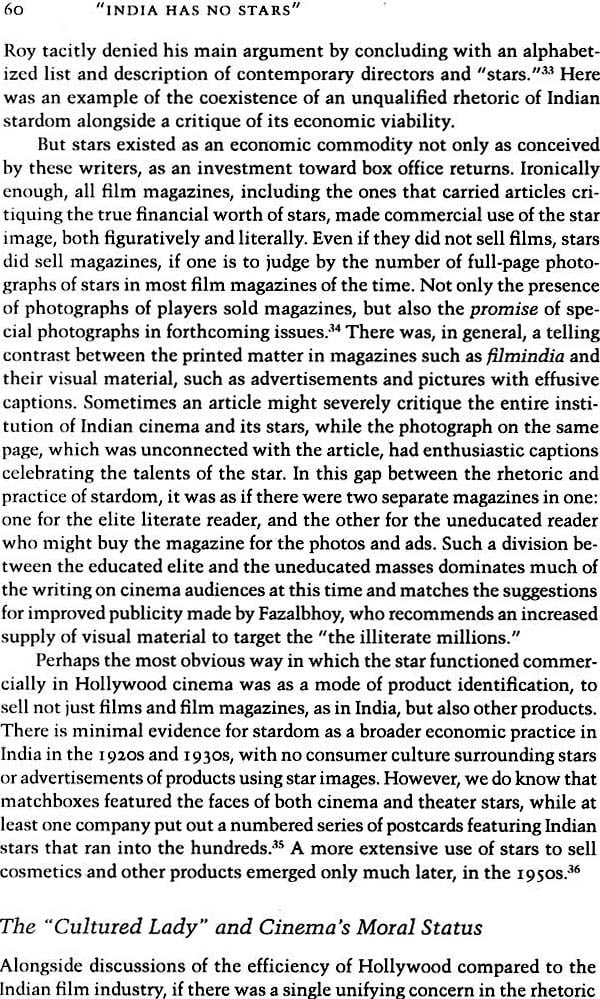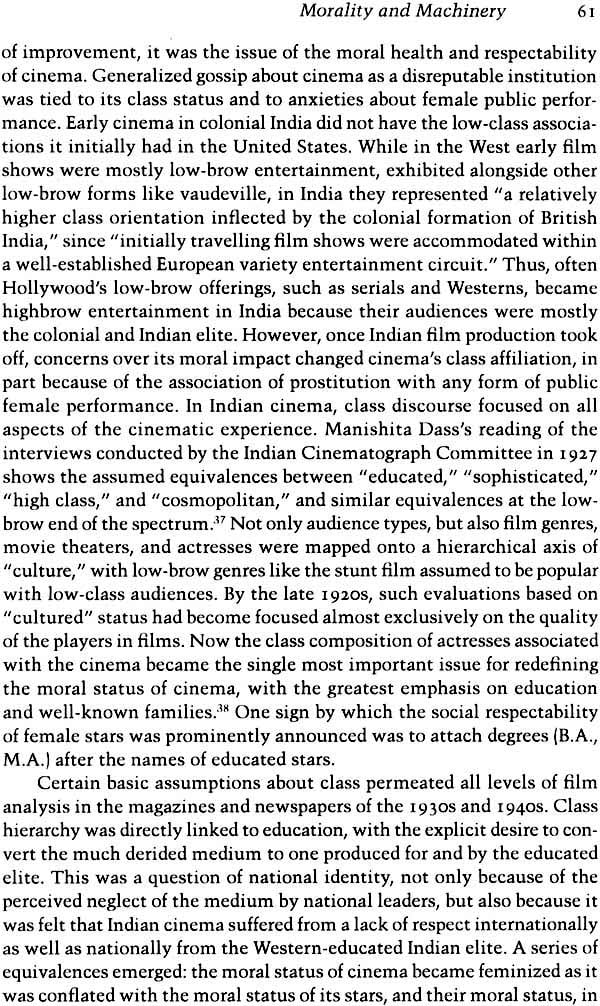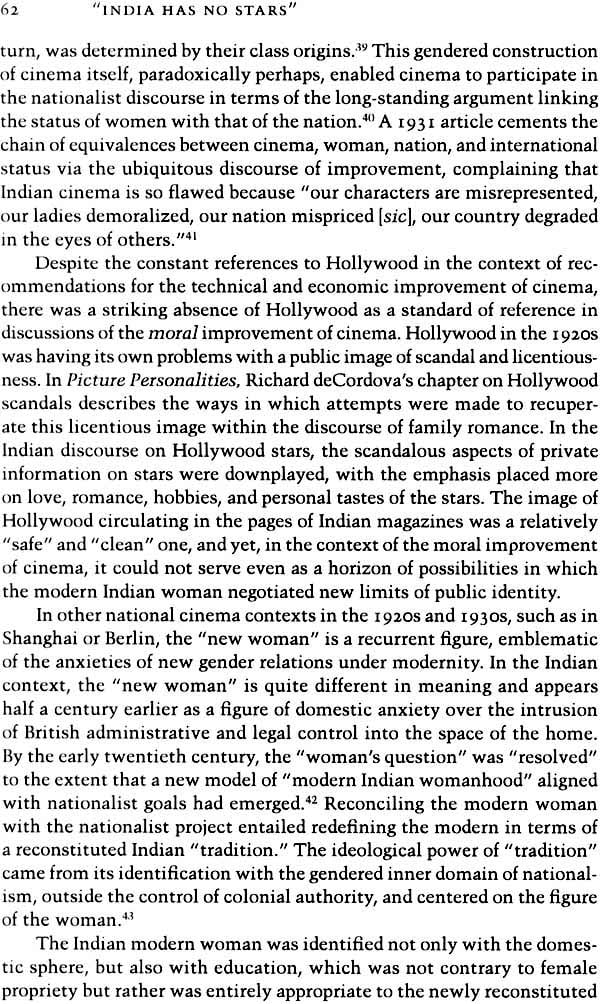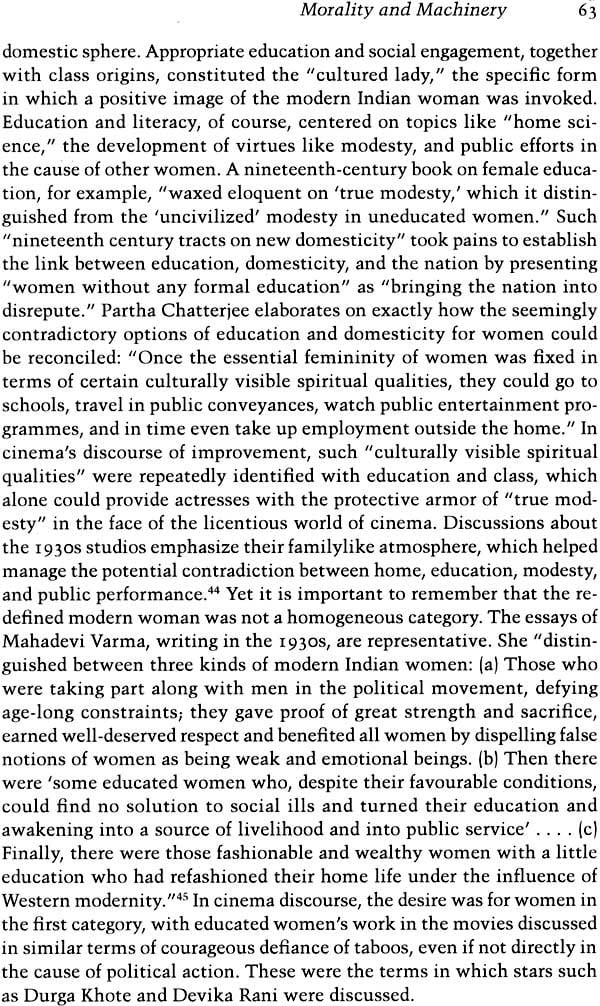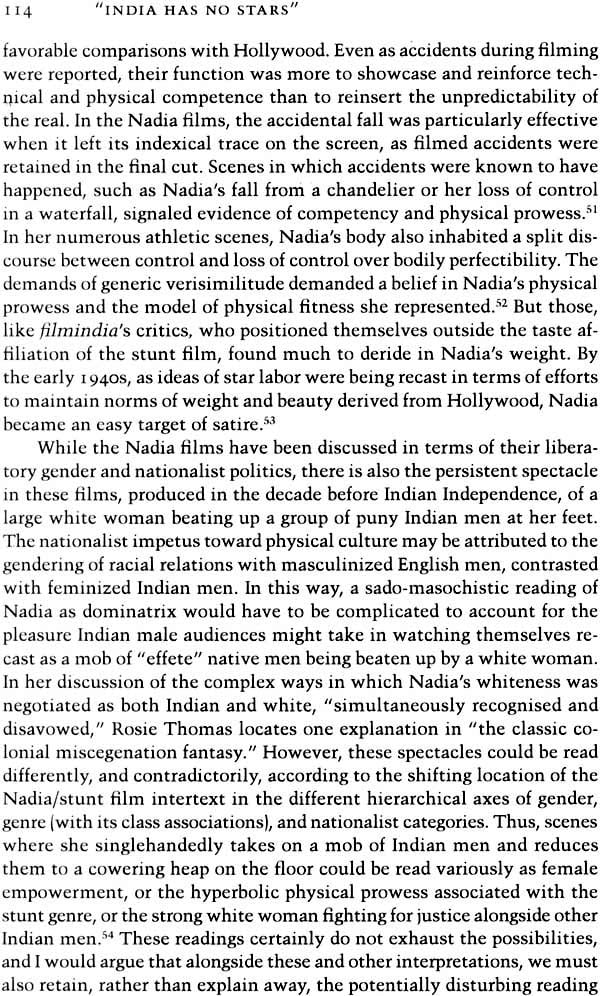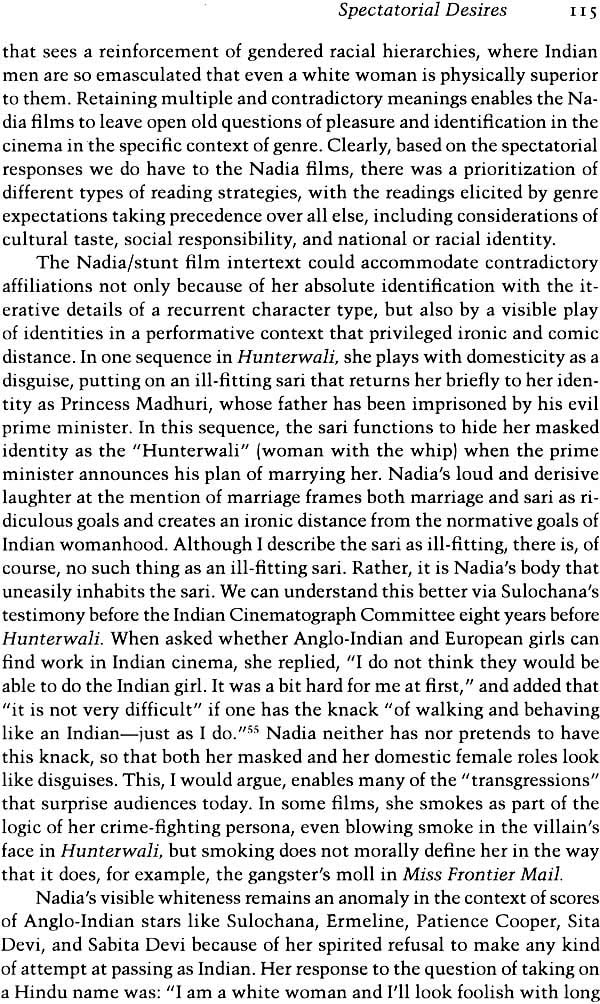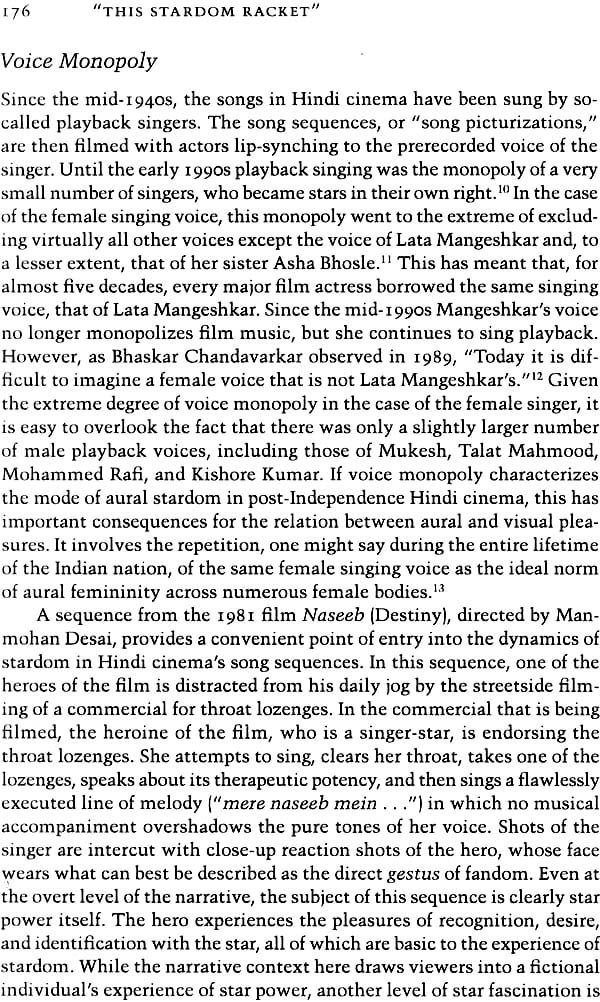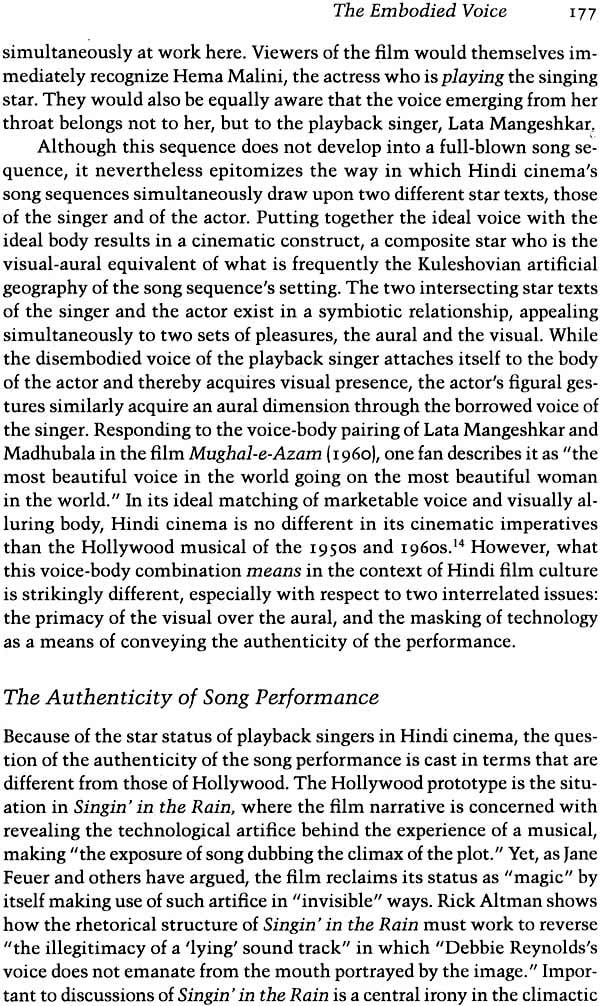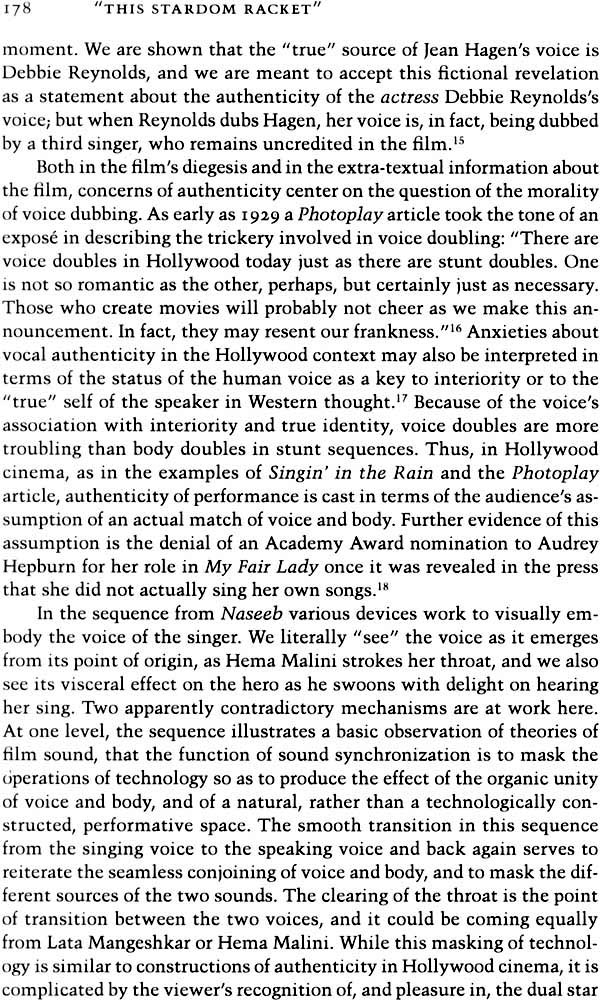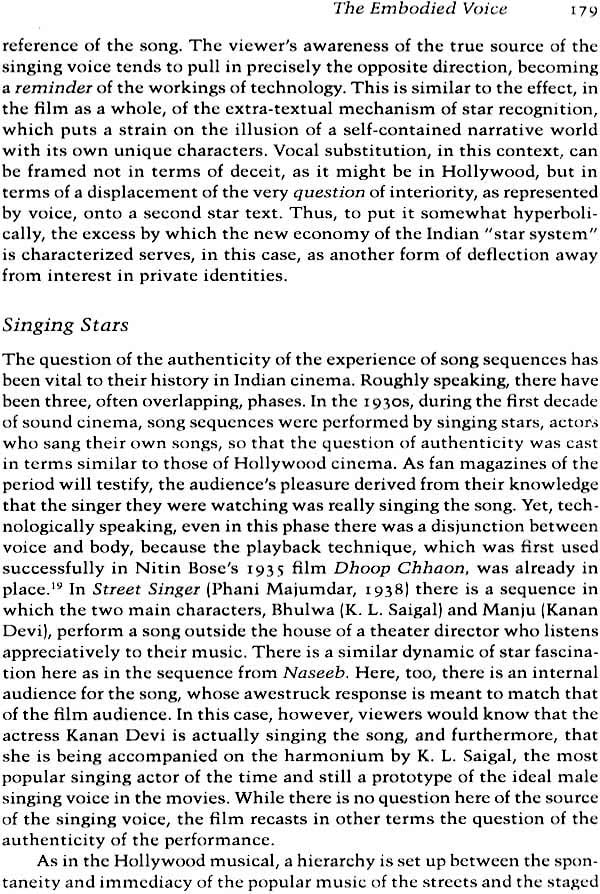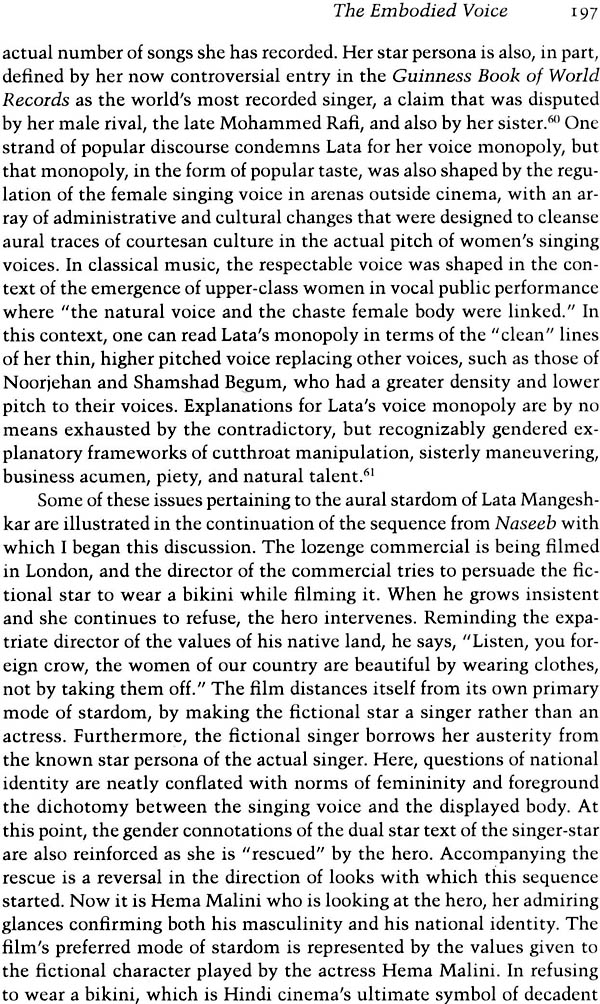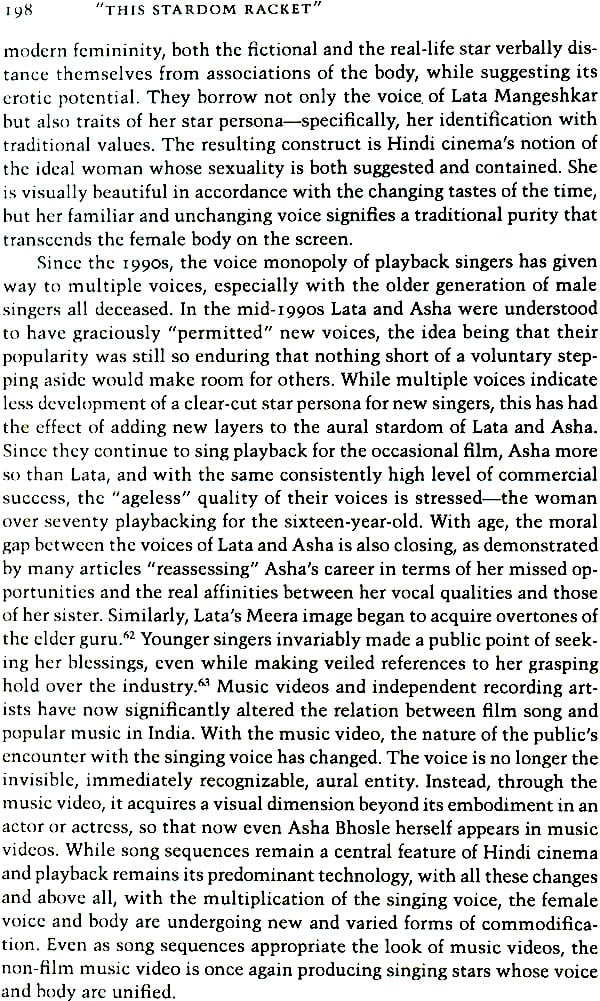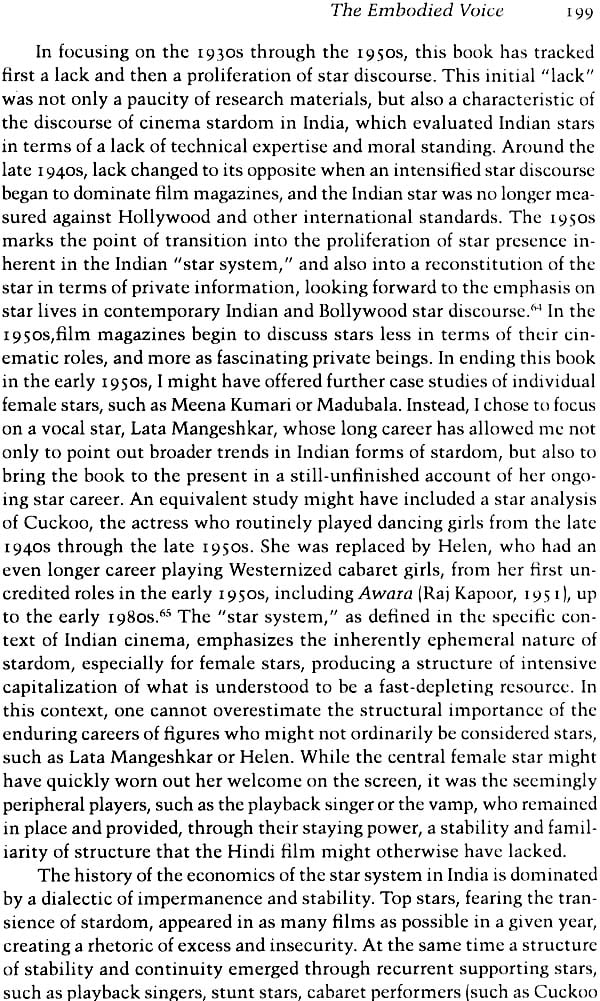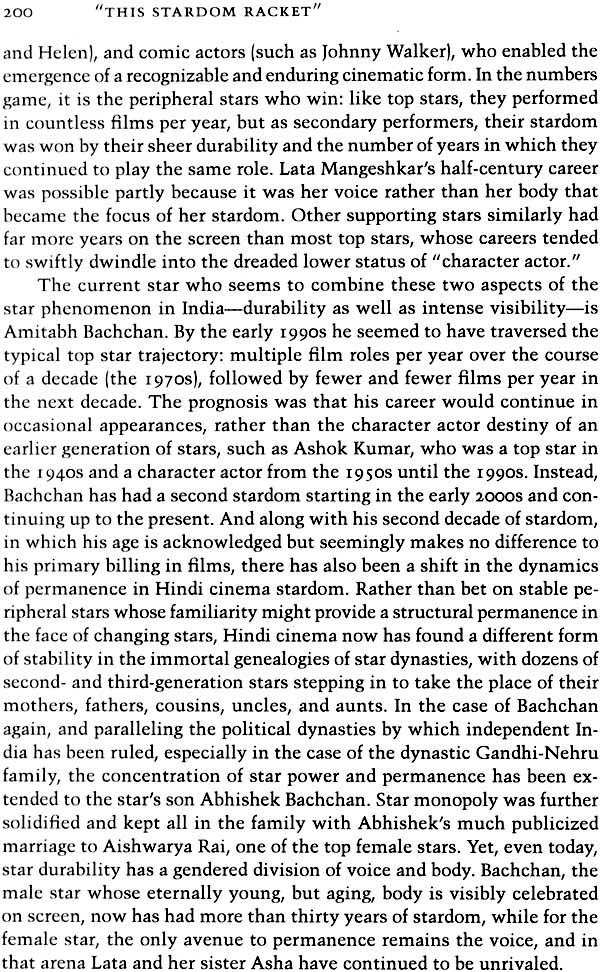
Wanted Cultured Ladies Only (Female Stardom and Cinema in India, 1930-1950s
Book Specification
| Item Code: | NAL067 |
| Author: | Neepa Majumdar |
| Publisher: | Oxford University Press, New Delhi |
| Language: | English |
| Edition: | 2011 |
| ISBN: | 9780198066439 |
| Pages: | 272 (24 B/W Illustrations) |
| Cover: | Hardcover |
| Other Details | 8.5 inch X 5.5 inch |
| Weight | 430 gm |
Book Description
Wanted Cultural Ladies Only! Maps out the early culture of stardom in Indian cinema from its emergence in the silent era to the decade after Indian independence in the mid-twentieth century. Neepa Majumdar combines readings of specific films and stars with an analysis of the historical and cultural configurations that gave rise to distinctly Indian notions of celebrity.
Beginning with a history of the idea of stardom in India, Majumdar considers questions of spectatorship, gossip, and popularity as they pertain to two popular stars, Sulochana and Fearless Nadia, who occupied the highbrow and lowbrow ends of the spectrum of stardom in the 1930s and evoked very different fan responses. The book also analyses the impact of star monopoly on textual and performance conventions through the half-century-long vocal dominance of playback singer Lata Mangeshkar as well as 1950s actress Nargis. This book will be indispensable for students and researchers of cultural and film studies, politics, sociology, and history. It will also appeal to anybody interested in Bollywood.
Neepa Majumdar is Associate Professor of English and Film at the University of Pittsburgh.
Cinema arrived in India on 7 July 1896, just six months after the first public screening by the Lumiere brothers in Paris. By the 1930s, alongside the material technology of filmmaking, such as raw film stock, cameras, projectors, lighting equipment, and, most recently, sound systems, Indian cinema had imported the less material but no less powerful cultural apparatus of the Hollywood mode of filmmaking, which was then, in varying accents, grafted onto existing Indian forms of entertainment. A stock-taking account of the history of Indian cinema written for the 1933 annual issue of Rangbhoomi, a Hindi weekly film magazine which had started the previous year, described the cultural complications associated with the entry of this new medium into India: since cinema had spent its infancy and youth in another country before coming to India, “ that is why its limbs, its color, its appearance, its mentality, and its instinct have all become foreign.” The author used the allegory of hospitality to a stranger to raise the question of compatibility: how does one offer food on a leaf-plate to one who is used to Western-style plates; Indian clothing to one who wears suits; or the Devanagiri script to one used to foreign accents? Against this concern with translation, consider a 1937 filmindia editorial titled “India Has No Stars”: “In India we never had real stars, and will probably never have any for a long time to come.”
By the 1930s, Indian journalistic discourse on cinema was already historicizing itself and was obsessively engaged in asserting Indian cinematic identity and measuring it against international norms. Contrary to the proclamations of editors and journalists, a “star system” existed in India, but without a printed discourse on the private lives of Indian stars, even though gossip about the sexual liaisons, marriage, divorce, and other scandals of Hollywood stars was routine. In the case of Indian stars, private information was regularly deflected back to a professional context. Rather than the on- and off-screen activities of individual stars, stardom itself was more regularly the subject of fascination and discussion.
Technology is never culturally neutral, and the importation of cinema technology into India was always accompanied by its products. Motion picture cameras, sound, and color arrived in conjunction with the films themselves, and the material technology and its cultural products became inseparable in the public mind. Thus, it is likely that the first motion picture cameras, for instance, became inseparable from their production of very specific images, as the Lumiere cameramen who traveled around the world to sell the cinematograph screened films to demonstrate the capabilities of their new technology. The Lumiere production, Train Arriving at the Station (1895), for example, almost immediately gave rise to its Indian counterpart (albeit produced by a foreign production company, Andersonoscopograph), in a Bombay variant, Train Arriving at Churchgate station (1898). Similarly, as American, British, French, and other films circulated in India, they advertised both the new technologies and their cultural and representational possibilities in the form of advertising methods, exhibition venues, technical journals, genres, and stars. Thus, alongside film equipment, film genres, and narrative forms, stardom itself may be regarded as one of the cultural technologies imported from Hollywood. This “technology” include not only Hollywood films starring popular actors and actresses, but perhaps more important, the paraphernalia of publicity, such as photography and film magazines, and the ideologies underlying stardom.
The translocation of the cultural apparatus of narrative forms and film culture into India is far more complex than a simple imported/indigenous dichotomy can hope to suggest. Stephen Hughes, for instance, cautions against a purist lineage of Indian cinematic forms because “the cultural genealogies involving Hindu mythological traditions are insufficient for understanding the pre-history of cinema in India.” Rather, the visual and narrative forms of early Indian cinema must be placed in the wider context of parallel transcultural negotiations in other popular forms of representation. Cultural practices such as Indian popular painting, photography, and early cinema emerge through “intricate, dynamic processes implicated in strategies of containment, subjugation, accommodation,” and their reuse of specifically traditional ways of arranging spatial relations and of seeing or darsana. Indian popular painting from the late nineteenth century, exemplified by the work of Raja Ravi Varma, shifted the meaning of conventions of British “academic” art, such as symmetry and perspective, to combine illusionism with strategies of “frontality,” producing what Ashish Rajadhyaksha calls a neo-traditionalist style. Judith Mara Gutman makes a similar point regarding the language of frontality in early Indian photography, which produced photographs “that are puzzling at first to the Westerner” because they draw in unfamiliar ways on “a history of Indian tradition and visual pattern-making.” Christopher Pinney reads the translocation of Western techniques in Indian photography, lithography, and early cinema in terms of a diverse set of possibilities in which Western representational techniques “became one among many tools.”
The complex issue of translocation is also exemplified, in the case of cinema, in the oft-repeated story of the impulse behind the films of D.G. Phalke, the maker of Raja Harishchandra (1913), long considered to be one of the first feature films in India. While the mythological genre, Phalke’s “invention,” has been regarded as unique to India, its original cinematic model, as Phalke describes it, was a foreign film, The Life of Christ. Yet reading the relation between The Life of Christ and Phalke’s mythological, such as Lanka Dahan, through the lens of colonial mimicry neglects the complex cultural space in which both films circulated. It is not simply a matter of Indianization of a cultural text originating in the West, but of complex and ultimately commercially driven negotiations of popular taste and critical canons. The stunt and costume film genres, popular in the 1920s, provide further evidence of the complex rewriting of specifically Hollywood technologies of entertainment onto existing Indian forms. A genre that was singlehandedly launched in India by the wild success of Douglas Fairbanks in The Thief of Bagdad (Raoul Walsh, 1924), the Indian stunt or action film also drew on “India’s own popular visual and performing arts (especially the folk and company theatre form) [which] remained the chief stylistic source of inspiration.”
In considering some of the analytical problems posed by the transcultural relocation of the star concept in the early decades of Indian cinema, this book participates in the recent turn to a feminist film history that has reanimated early cinema studies with a project of radically restoring historical and local specificity to multiple “vernacular” cinemas, relativizing and thus expanding the variable and sometimes anachronistic local meanings of the “early” in “early cinema” and the “star” in “stardom.” More than merely a project of recovery of marginalized (female) figures or (non-Western) cultural spaces, this new history has also forced a reappraisal of basic disciplinary questions, such as the nature of historical evidence, the relation of film history and theory, and Hollywood’s status as the normative popular cinema. Yet, paradoxically, the study of early cinema stars in any national context remains in some ways plagued with the burden of the seemingly always already known, as the regulatory and gendered discourses of cinema and stardom in locations as different as China, Japan, and Britain appear to share a familiar terrain. In this shared global discourse of stardom, we find early film actresses as the object of both fascination and moral censure, taking on the burden of a more generalized anxiety regarding increased female participation and visibility in the public sphere.
Studies of early star discourse in non-U.S. spaces are compelled also to consider their subject in relation to the unquestionable status of Hollywood stars as paradigmatic of stardom itself. Within this terrain certain repeated topoi present themselves, such as the “New Woman” and her negotiations with modernity, social and technological mobility, and new configurations of domesticity, leisure, and public space. In many recent studies, the predominant model concerning the relation of global and local idioms of cinema has been Miriam Hansen’s influential formulation of Hollywood’s global impact in mediating “ a sensory reflexive discourse of the experience of modernity and modernization, a matrix for the articulation of fantasies, uncertainties, and anxieties.” Hansen’s argument is primarily that Hollywood cinema’s hegemony as the “first global vernacular” is to be seen not merely as the economic practice it undoubtedly was, but also as a meditation of modernity at the level of the senses rather than in terms of representative strategies or narrative form. As Catherine Russell puts it, “the concept of vernacular modernism enables us to recognize the different values attached to cultural forms beyond a formalist model that assigns meaning to technical effects outside their specific contexts of production and reception.” To explain why Hollywood products, rather than, say, the films produced by Pathe, became the global vernacular, without resorting to arguments about economics, Hansen places the emphasis on local practices of consumption. But since localized models of consumption might apply equally to, say, Pathe, Hansen returns us to the notion of an “Americanization from below,” which she explains as a “powerful matrix for modernity’s liberatory impulses- its moments of abundance, play, and radical possibility, its glimpses of collectivity and gender equality.” If we consider the anxieties surrounding cinema and stardom in multiple national contexts, we find that local debates on cinema were shaped not only by the encounter with Hollywood, but also by older contexts of performance predating Hollywood and often drawing on similarly vernacularized idioms of negotiated global and local performative modes. The concept of vernacular modernism has enabled a productive shift from the focus on national identity in cinema studies toward a flexible and porous understanding of the experience of local film culture, and has opened itself up to new meanings in specific, historically grounded contexts. Both Manishita Dass and William Gardner, for example, writing on Indian and Japanese cinema respectively, turn to the linguistic meaning of vernacular to amplify its resonance for the particular cinematic cultures they are studying. Zhang Zhen and Weihong Bao likewise explore multiple resonances of the vernacular, the modern, and the modernist in the context of early cinema in Shanghai.
| List of Illustrations | vii | |
| Acknowledgements | ix | |
| Introduction: Translocating Hollywood Stardom in India | I | |
| Part I "India has no stars" | ||
| 1 | The split discourse of Indian Stardom | 17 |
| 2 | The morality and machinery of stardom | 50 |
| 3 | Real and imagined stars | 71 |
| 4 | Spectatorial desires and the hierarchies of stardom | 93 |
| Part II "This stardom racket" | ||
| 5 | Monopoly, frontality, and doubling in postwar bombay cinema | 125 |
| 6 | Nargis and the double space of female desire in anhonee | 150 |
| 7 | The embodied voice: song sequences and stardom in bombay cinema | 173 |
| Notes | 203 | |
| Works cited | 235 | |
| Index | 249 |
